Raclette (Everything You Need to Know About this Swiss Cheese)
Raclette is a very popular semi-soft cheese from Switzerland. It’s often a highlight of festivals, Christmas markets, and each year the Swiss cannot wait until it’s “raclette weather!” Once you taste it, you won’t be able to wait for it, either!
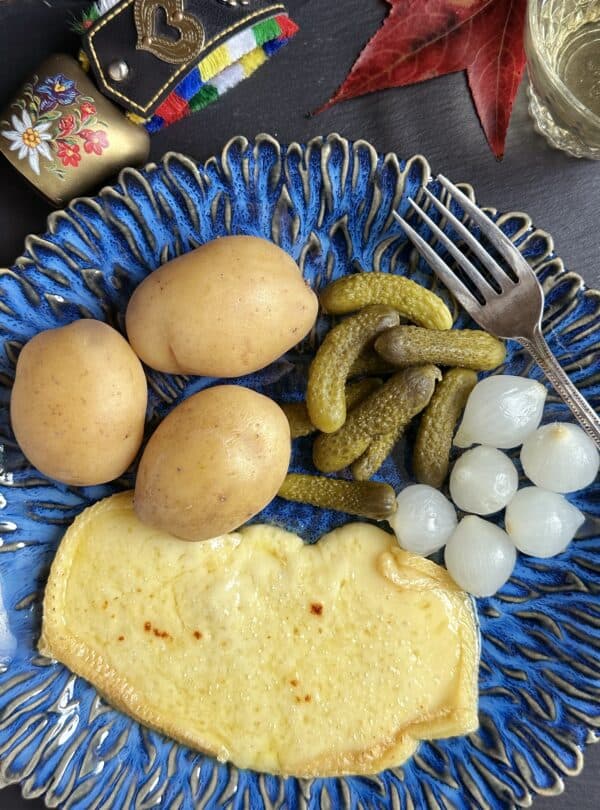
If you’ve ever had the pleasure of having a really good raclette cheese, you’ll know it’s not just another run of the mill cheese.
As an Amazon Associate I earn from qualifying purchases. Cheese facts are courtesy of the Valais Region of Switzerland.
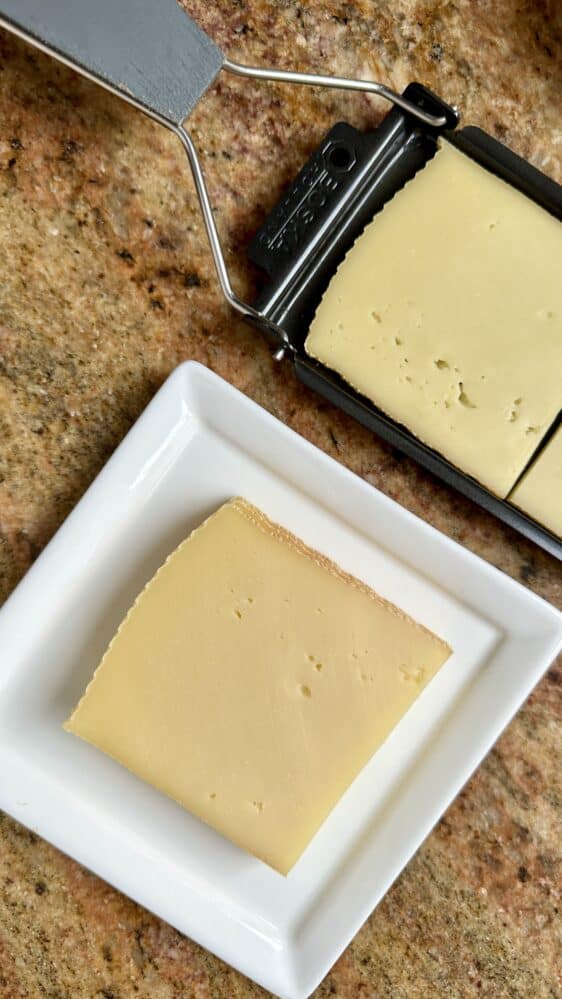
What is Raclette?
Raclette is a mild, semi-soft Swiss cheese made from cow’s milk which is traditionally served melted, and has a fantastic texture and flavor. Raclette with the AOP designation is the best quality, and a way for you to know you are buying the authentic and region-specific cheese. It also happens to be one of my favorite cheeses, which is saying something because I love so many!
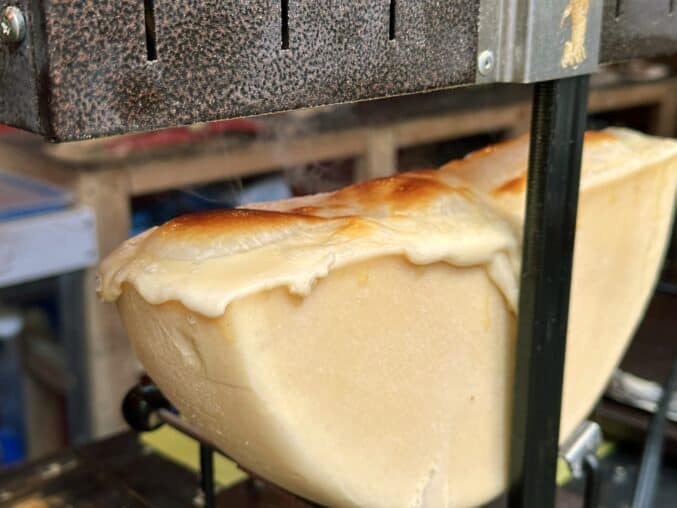
How do you Make Raclette?
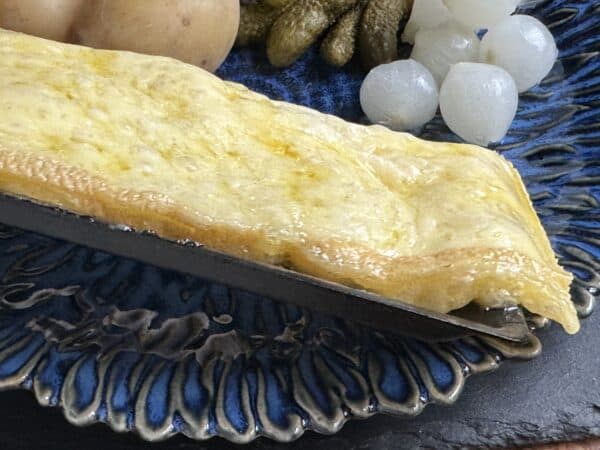
There’s no need for a raclette recipe. Simply boil some mini potatoes in salted water, and have some cured meat (like prosciutto or speck) on hand, along with cornichons and pickled onions. Choose your method of melting the fromage, then scrape the melted bit onto individual plates. In fact, raclette comes from the word racler which means “to scrape” in French. -Emmi Cheese.
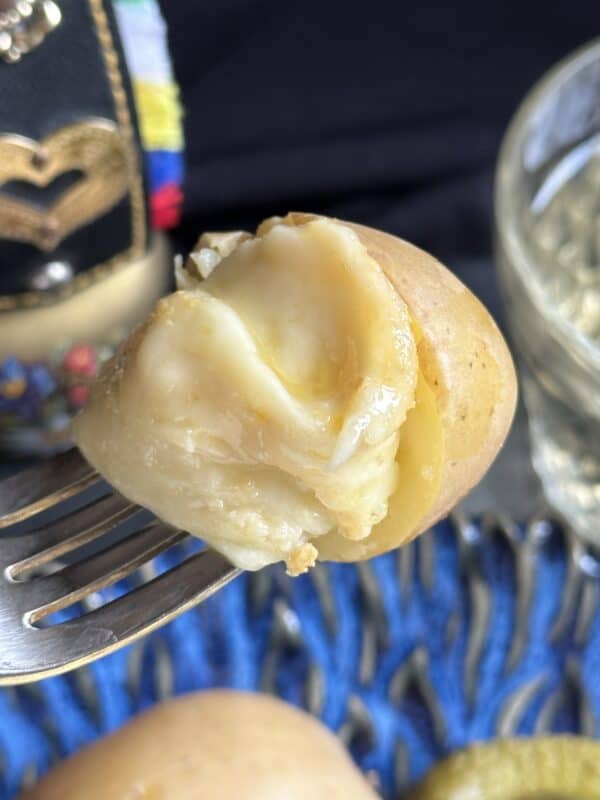
How do you Eat Raclette?
Raclette cheese is melted and served on, or with, potatoes and pickles, or bread, along with some charcuterie.

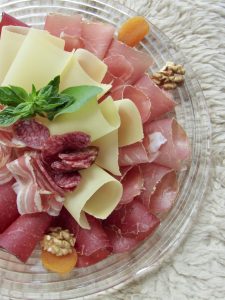
Traditionally, this famous Swiss cheese is also served as part of a Valais platter (a meat and cheese board), or with roasted chestnuts and a meat and cheese board, called a “brisolée.”
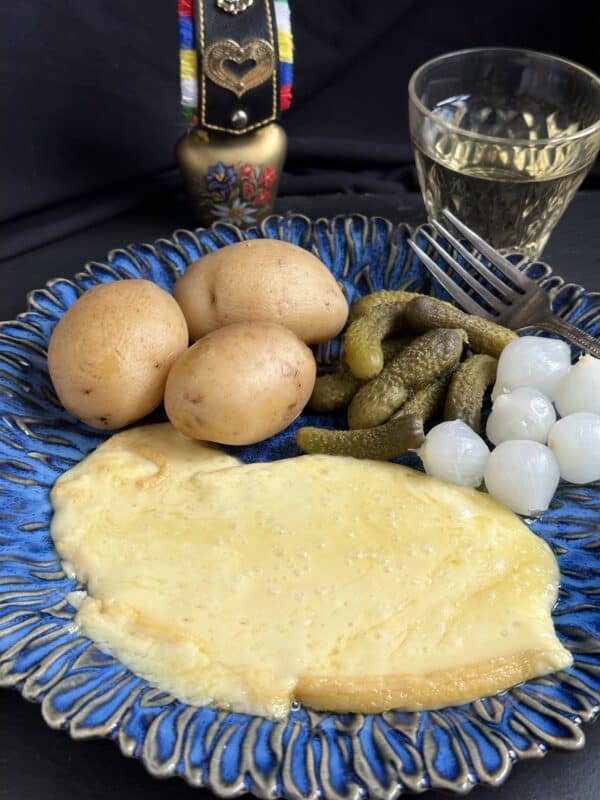
Learning about this Cheese
My first introduction to this Swiss cheese was over 30 years ago from my cookbook, A Taste of Switzerland by Sue Style. It featured a photo of big, gooey slab of cheese melting up against a fire. The accompanying text entitled, REAL RACLETTE, and followed with:
“Light a good fire. Buy yourself a half wheel of real Raclette cheese, preferably from the Valais, between 3 and 5 months old…”
The author continues the tutorial, noting that the rind should be scraped to allow easier melting, and instructs that boiled potatoes, cornichons, pickled onions and black pepper should be at the ready, as well as plates. The last part makes my mouth water as she describes putting the cheese on a large stone near the embers of the fire, and scraping off the melted cheese onto a plate. She concludes with, “Continue in this way until everyone is full.”
According to legend, the Swiss fascination with melted raclette all started when a Valais wine grower, Léon, warmed up a piece of cheese over an open fire on a cold day. Cheese melting in Valais dates back to the year 1574. The rest is culinary history.

Raclette is not eaten during hot summer months, but only during the colder season. Makes sense since it is melted by a fire, right? However, there are now many other options to melt raclette. I have this little stove top melt pan which is perfect for one or two people. I still have to wait for Trader Joe’s to stock raclette in the winter months, though! Note: Trader Joe’s raclette is not AOP as it is made in France, but it’s still a very good quality cheese at a reasonable price.
Tartiflette is another dreamy cheesy dish!
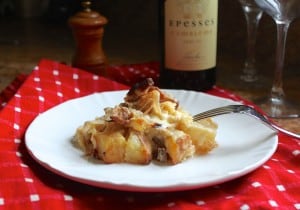
The appeal has spread to the US, given the fact that there are pages of “raclette grills” to choose from in just the first page of results from an Amazon search of “raclette.”
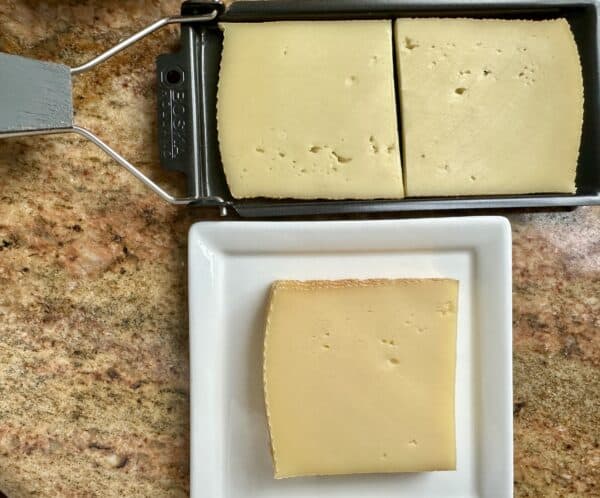
SUGGESTION: the stovetop melt pan, or this larger raclette grill, along with a package of raclette cheese (Trader Joe’s normally carries it during November/December/January) makes a very useful, delicious and inexpensive gift.
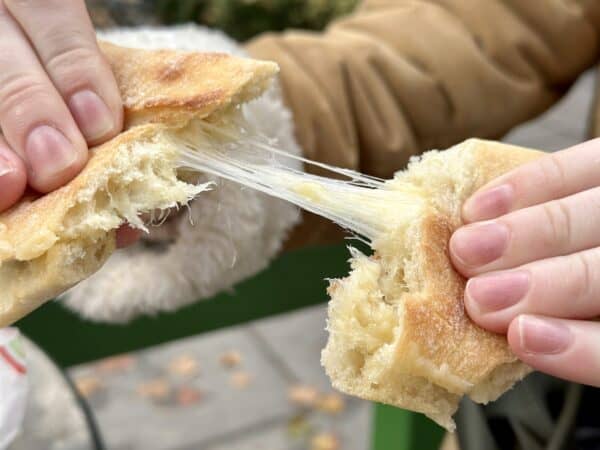
Try these delicious raclette potatoes which go like hotcakes at parties!
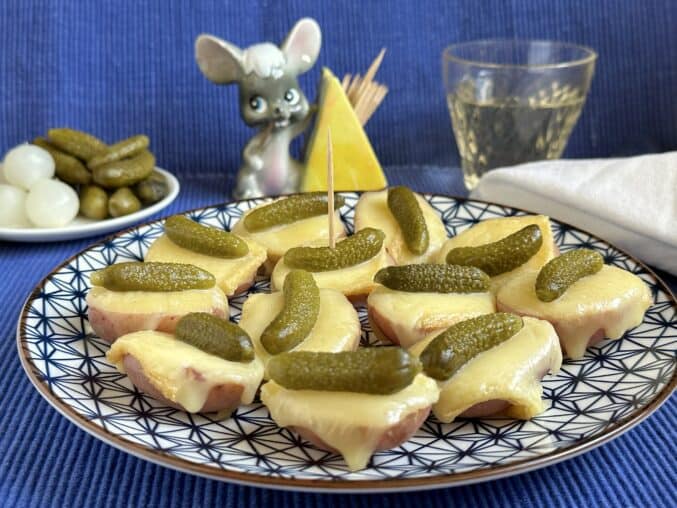
There are so many types of raclette grills which are available in North America and other regions outside of Switzerland. It’s really up to you how on serious you want to get. I was blown away when I saw this heavy duty raclette grill available online!
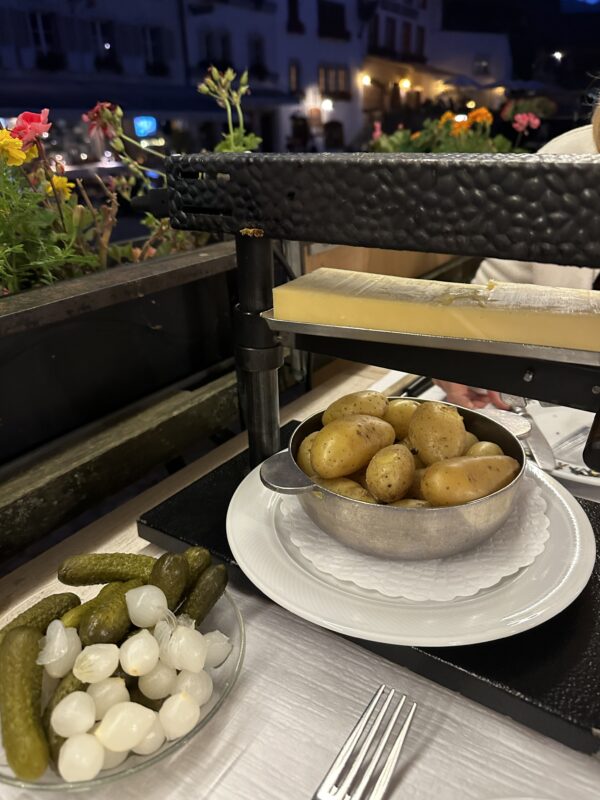
This is the same as ones I’ve seen used for raclette events, food stalls, markets and in restaurants in Switzerland! I learned a lot more about this cheese after traveling to Switzerland several times and want to share some facts with you, and I hope I will entice you into trying one of my favorite cheeses!
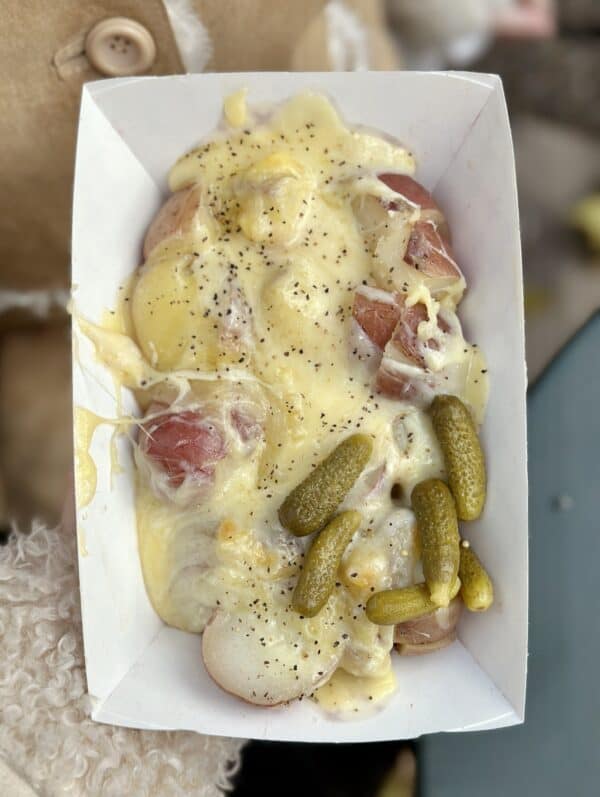
Raclette
(10 Things to Know About This Swiss Cheese)
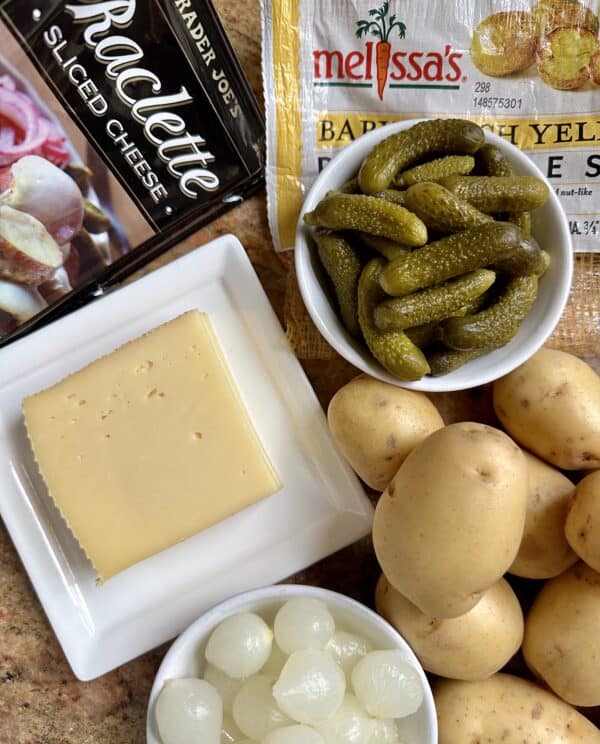
1. Do you know there’s a difference between “la raclette” and “le raclette”? While the former refers to the cheese as it is melted in dishes, the latter is used to refer to the actual cheese.
2. Wheels of AOP raclette cheese have a stamp on their sides, which shows exactly where and when the cheese was made.
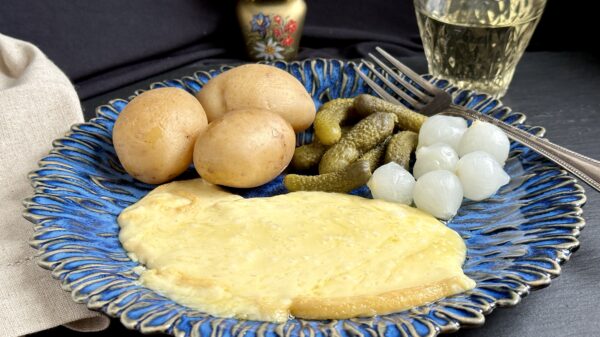
3. This delectable cheese will melt at 104°F (40°C).
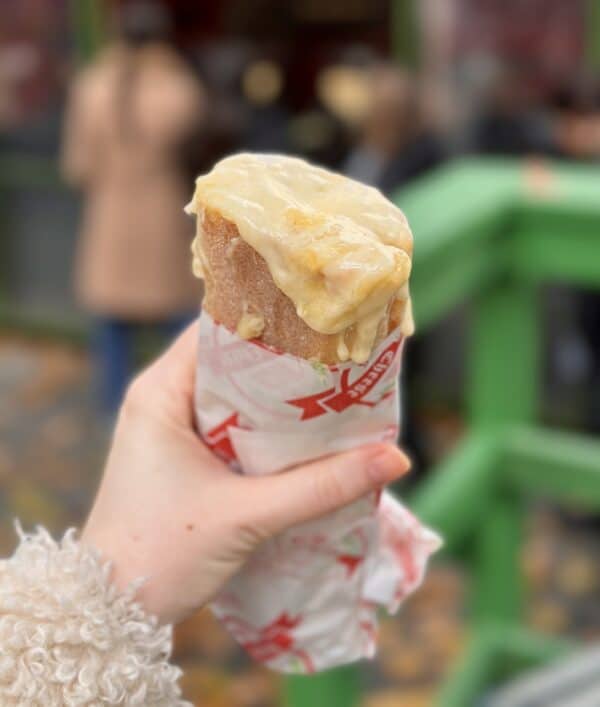
4. The only ingredients found in authentic raclette are: milk, water, salt, rennet, starter cultures, and cheese smear (cheese culture).
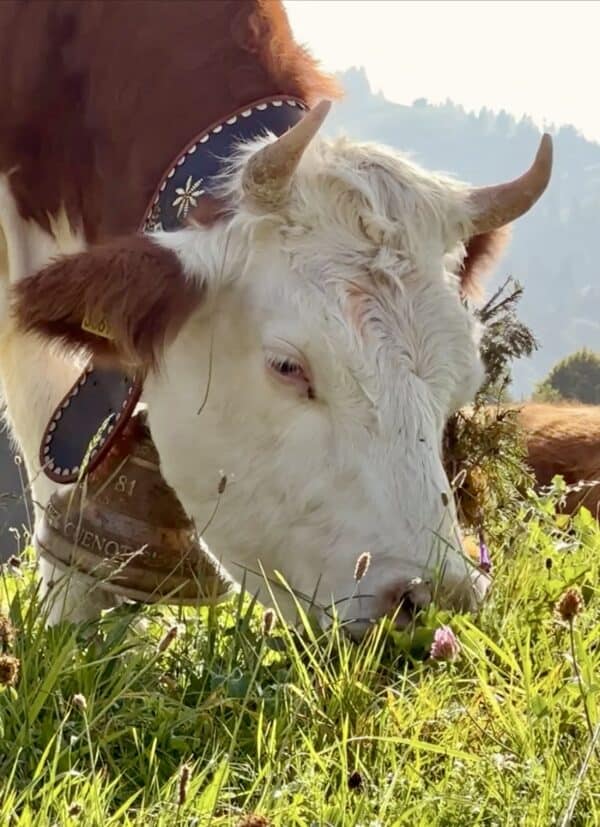
5. The flavor of this wonderful cheese varies with the region in which it was made due to the diet of the cattle and which alpine plants they eat.
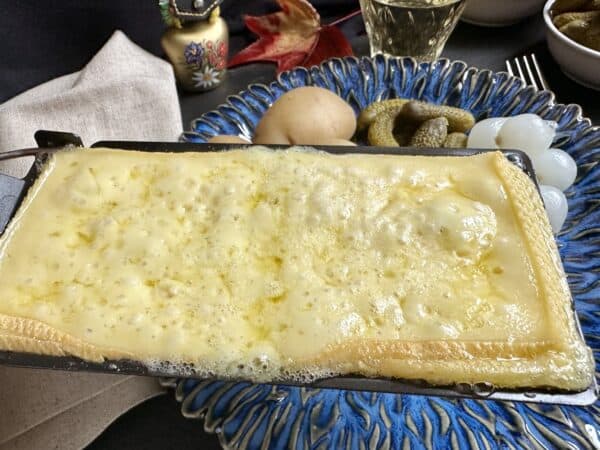
6. Traditionally, raclette is heated by wood fire. However, you can use specially made grills at home for an easier experience.
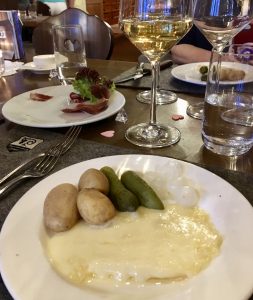
7. This cheese is naturally gluten and lactose-free! It’s also high in protein, magnesium, calcium, vitamin A, vitamin B, and Omega-3. (On a personal note: I found the fact that raclette has more protein than meat and fish quite astonishing.)

8. One wheel weighs approximately 11 lbs (5 kg), and measures a foot (30 cm) in diameter.
9. “Raclette du Valais” has been a Protected Destination of Origin (AOP) product for the past 16 years. This means the Swiss government has strict requirements regarding which cows’ milk is used, where the cows are grazing, and how and where the cheese is made. This ensures top quality when you see the AOP mark.
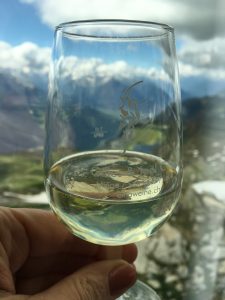
10. According to the Swiss, the best wine pairing with this cheese is a glass of white Fendant wine from the Valais or a Chasselas wine from Vaud.
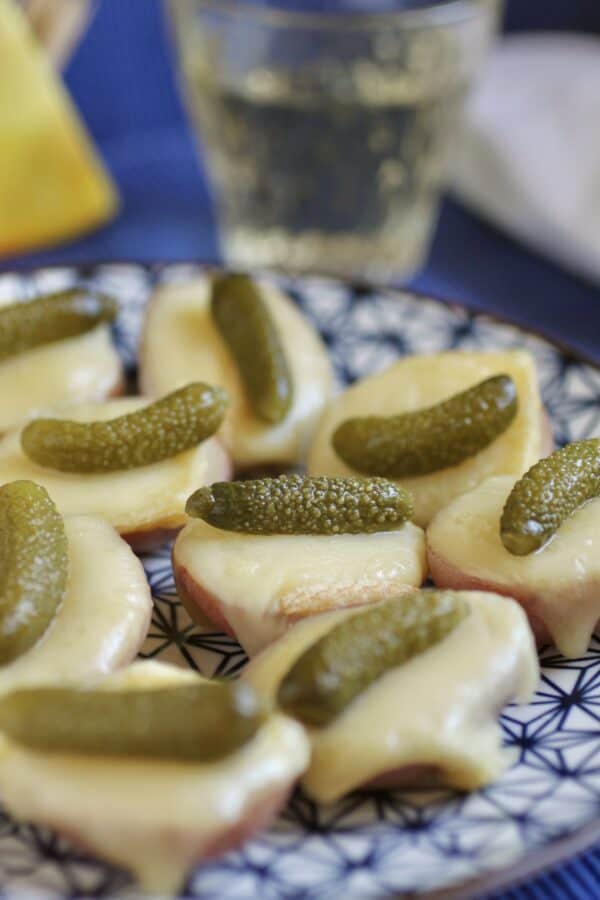
(I’m not that picky since it’s difficult to source Swiss wines in the US.)
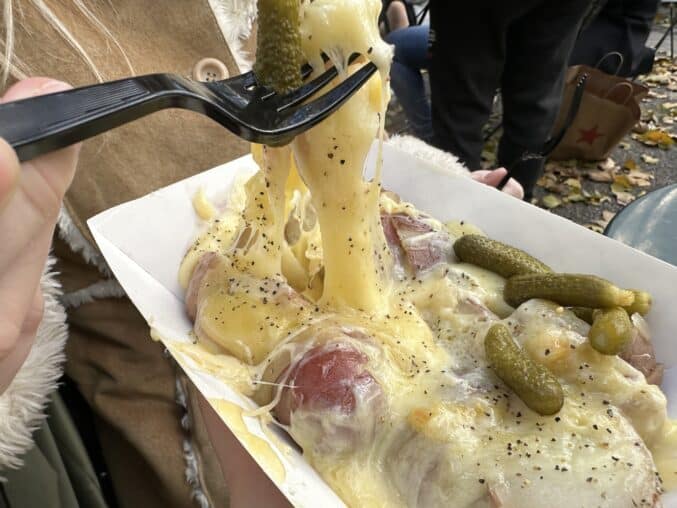
I wish I could describe the wonderful flavor of raclette to you, but it’s fruitless. The only way to understand why this cheese has so much popularity is to taste it yourself. Will you be giving it a try? Let me know in the comments below.
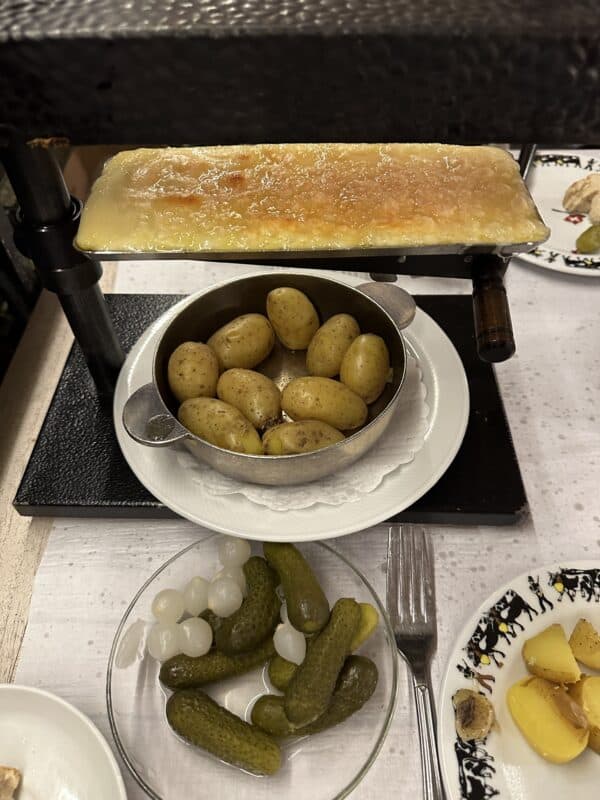
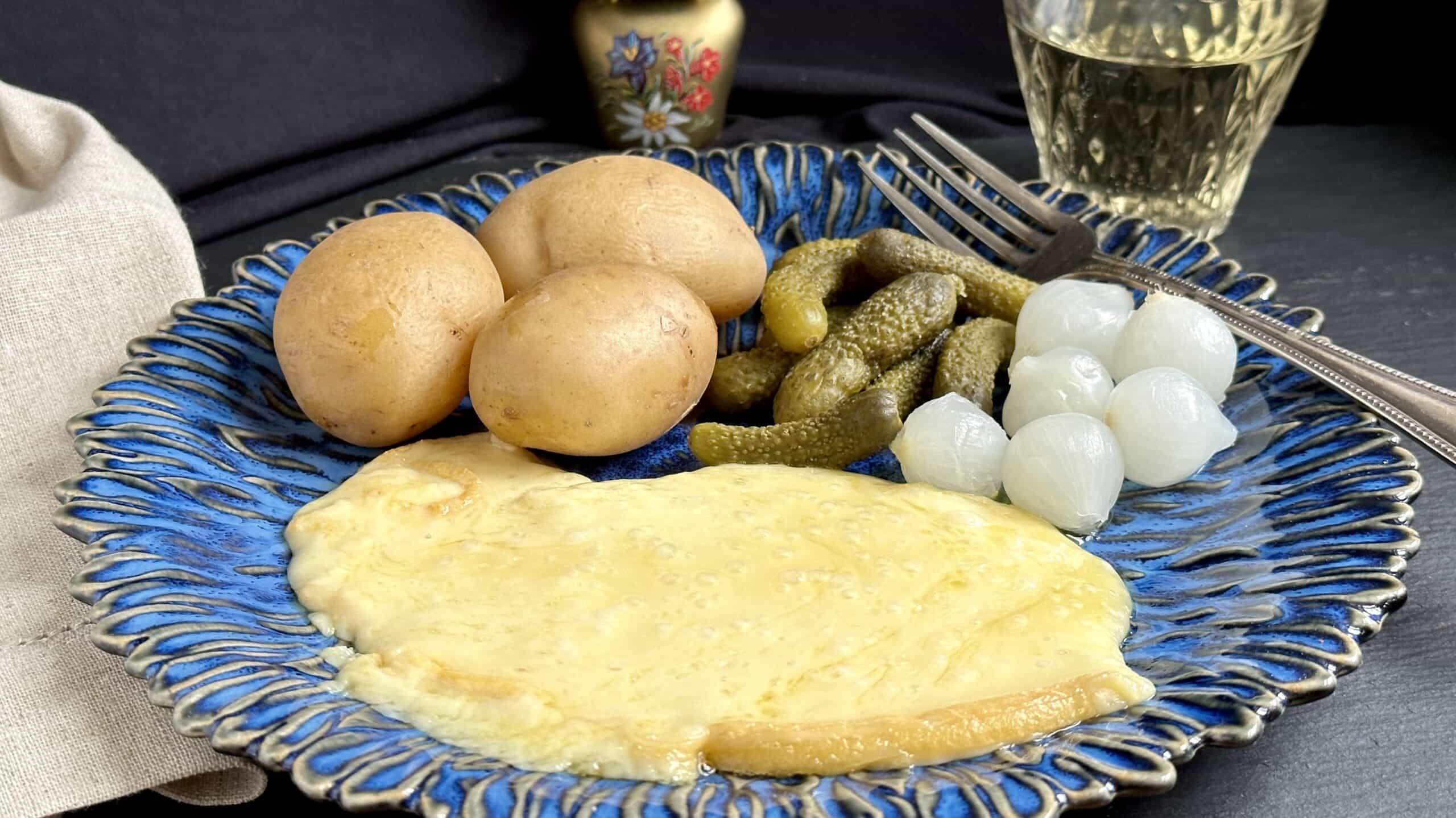
How to Eat Raclette
Special Equipment
- 1 raclette grill
Ingredients
- 7 oz raclette cheese (slices)
- 16 oz Dutch yellow baby potatoes (boiled)
- 4 oz cornichons amount is not important
- 4 oz pickled onions amount is not important
- charcuterie (such as prosciutto, speck, salami or other cured meats-optional)
Instructions
- Prepare the raclette grill (as per the manufacturer directions.)
- Place the boiled potatoes in a bowl, they can be warm or hot.
- Add plates of pickles (and cured meats, if using) to the table.
- To serve, begin melting the slices of raclette cheese.
- Everyone helps themselves to the potatoes and pickles.
- Finally, pour the melted raclette onto each plate or on top of the potatoes, as desired. Repeat with more cheese until satisfied.
Notes
Nutrition
Some Fun Cheesy Terms
Morge: the part of the crust that is scraped off before consumption.
“Nun”: rind of the cheese when roasted.
~
Have I convinced you to try this delicious cheese? Let me know if you have it for the first time and what your opinion is! I’d love to know!
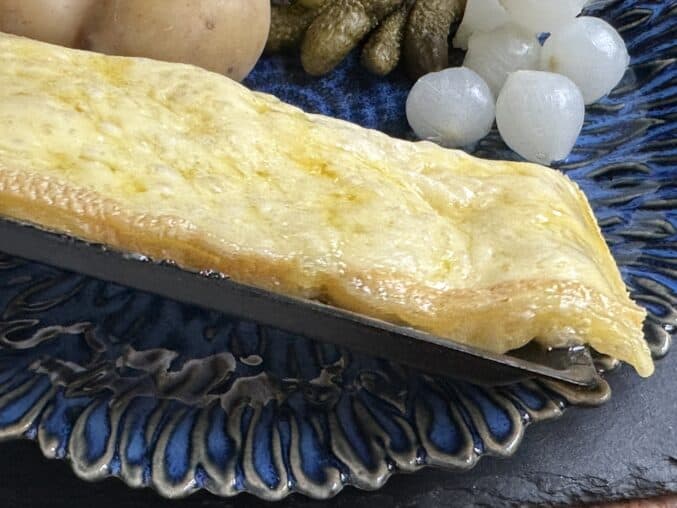
Christina’s Cucina is a participant in the Amazon Services LLC Associate Program, an affiliate advertising program designed to provide a means for sites to earn advertising fees by advertising and linking to Amazon.com.


Thank you for the explanation, I love Raclette. We enjoyed it with small potatoes and cornichons.
Could not agree more with Raclette cheese being one of the best cheeses out there! But then being from Switzerland I might be biased, haha! The only thing I wanted to add is that for a traditional rackette, the potatoes are “Gschwellti” and are steamed not boiled.
And the addition of a charcuterie board is also a newer invention, but admittedly does sound yummy!
I tried it once in Switzerland and fell in love with it. I own a Raclette Grill now and it will be our Christmas dinner.
Christine, I ignored all of your suggestions to the letter, and it was fantastic.
I had a freshly baked (not by me, unfortunately) loaf of sourdough, from which I cut and toasted a couple of slices, then topped them with the raclette and put them under the broiler. Superb, served with a couple of cornichons.
My first experience with this cheese, and I love it, as did my wife, who often looks askance at my choices (think: Stilton, blue, etc).
Thanks for the introduction,
Joe
Haha! I’m wondering if that’s an autocorrect for something or you really did ignore all of my suggestions? Either way, I don’t mind because you love it, and that’s my goal, to share the love of this amazing cheese! Thanks, Joe!
No autocorrect (more correctly called “devil’s spawn”) involved. I’m glad that you took the post in the spirit that it was intended. That doesn’t always happen, but I’m too old to change. That’s my story…
I found it surprising how much different the just-sliced cheese tasted from the melted version. The former was “this is just OK”, while the later is the nectar of the gods. Well, if you can picture a hummingbird sucking down melted cheese.
Oh yes, you have no idea the horrible comments I receive, yours wasn’t at all! Yes, isn’t the difference amazing? Haha!
I have had this once, and it was incredible. Can’t wait to try your ideas this holiday season. We have finally gotten a Trader Joe’s where we live.
We had our first raclette in Québec, just before we moved to Tucson. Once here, and settled in our house, our new neighbors across the wash are from Switzerland, and invite us over regularly for raclette. We are so lucky — and so are you! This is a gorgeous cheesy post!
Wow, great neighbors to have! Yes, we are very lucky, David!